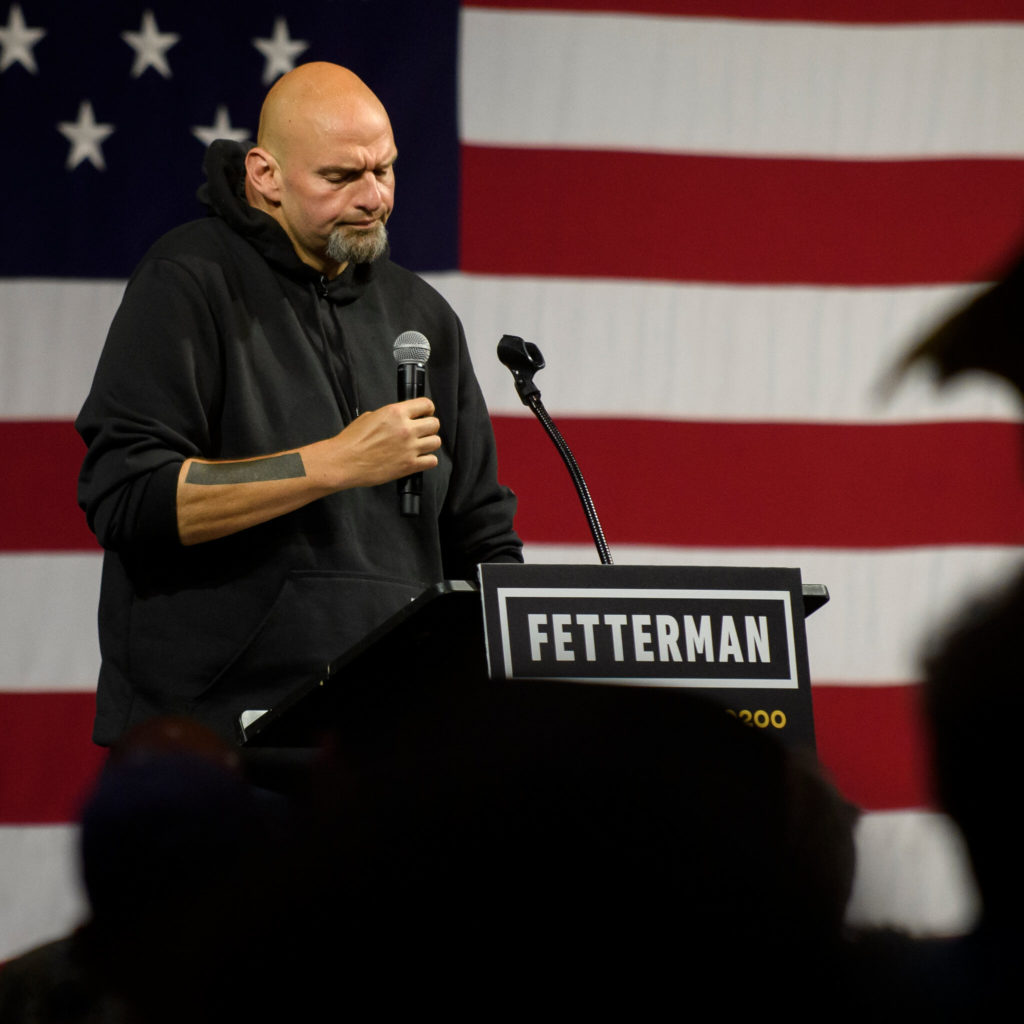Some of you may know about Pennsylvania senate candidate John Fetterman, who experienced a stroke in May of 2022. This left him with some auditory processing challenges. He is now making us of assistive technologies like closed captioning. Despite your political beliefs, his public use of AT should be celebrated for a number of reasons. He’s helping to normalize and destigmatize temporary and permanent disabilities. His willingness to use common assistive technologies in his personal and professional life shows he is adaptable and can troubleshoot. Unfortunately, this has led to some awful ableist attacks.
The lines of attack used against Fetterman, many of which are ableist (meaning they convey prejudice, either overt or subtle, against people with disabilities), tap into long-standing stereotypes about people with disabilities and could affect voters’ perceptions of him. That’s because there continues to be stigma against people with disabilities, according to Lisa Schur, a co-director of the Rutgers Program for Disability Research. As a result, she said, political “candidates with disabilities have to work extra hard to ensure voters that, yes, I’m competent and capable of doing the job.” This stigma can be particularly intense for candidates with mental or cognitive disabilities — or even for candidates where questions are raised about their cognitive function.
What Attacks On John Fetterman’s Health Reveal About Disability And Politics from FiveThirtyEight
This is all upsetting enough, but particularly jarring as October is National Disability Employment Awareness Month:
Observed annually in October, National Disability Employment Awareness Month (NDEAM) celebrates the contributions of America’s workers with disabilities past and present and showcases supportive, inclusive employment policies and practices. In recognition of the important role people with disabilities play in a diverse and inclusive American workforce, the theme for NDEAM 2022 Disability: Part of the Equity Equation.
Office of Disability Employment Policy
But it’s not all bad news. Teen Vogue put out an excellent op-ed about how ableism bars people with disabilities from seeking — or winning — elected office. While discouraging, they describe some gains:
Despite systemic inaccessibility and ableism in electoral politics, the disability community continues to gain mainstream attention around its political participation through organizing and movements like #CripTheVote. As these movements have grown, disabled candidates and elected officials are being more open about their disabilities and we have seen a number of historic firsts: the first full-time wheelchair users serving in Colorado and Arizona, the first appointed and elected Deaf mayors, and some of the first openly autistic state legislators.
John Fetterman’s Stroke Has Led to Ableist Criticism From Media, Politicians via Teen Vogue
Meanwhile, some cool programs are popping up around the country:
Ablr Works is the workforce development arm of LCI, one of the largest employers of Americans who are blind or visually impaired with headquarters in Durham. It has teamed up with the North Carolina Department of Health and Human Services’ Division of Services for the Blind (DSB) to kick off the statewide initiative this month. The benefits are twofold: It will make websites and digital content more accessible, as well as reduce the high unemployment rate among people with disabilities, the company said.
‘First-of-its-kind’ program to train visually impaired as digital accessibility testers
And last but not least, disabled people were among the hardest hit by pandemic-related job losses, but the rise in remote work also created new opportunities.
Recent employment figures indicate that disabled people have, in fact, gained a stronger foothold in the workforce, likely due to the popularity of remote work. According to the Bureau of Labor Statistics, the number of disabled workers ages 16 to 64 who are employed was well over 5.5 million during the summer months; as of September, that figure had crossed 5.8 million, accounting for nearly 4% of workers overall. The labor force participation rate rose to 38% in September, up from 37.6% in August, a year-over-year increase from 36.4% in September 2021.
The employment rate for disabled workers is higher than it has been in years
